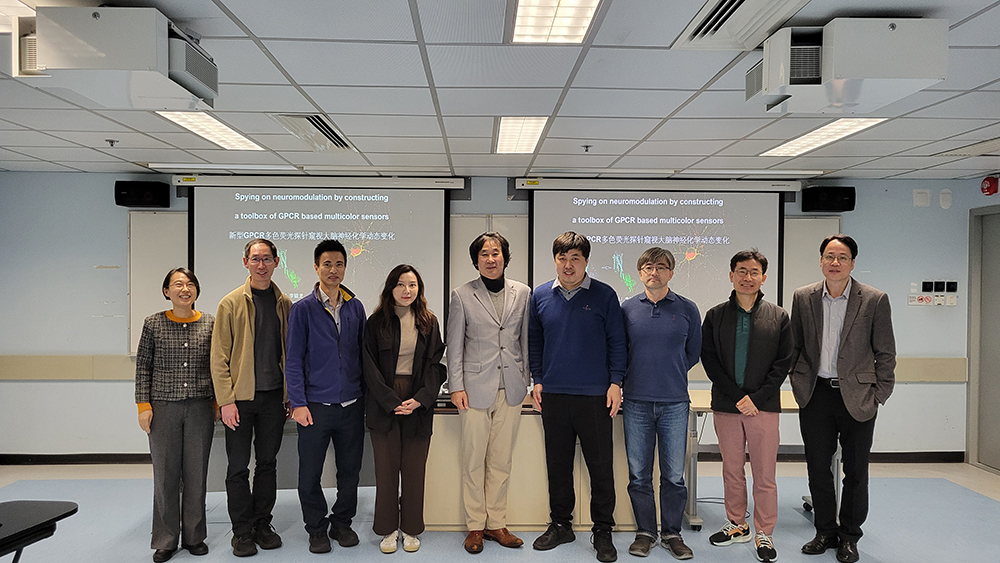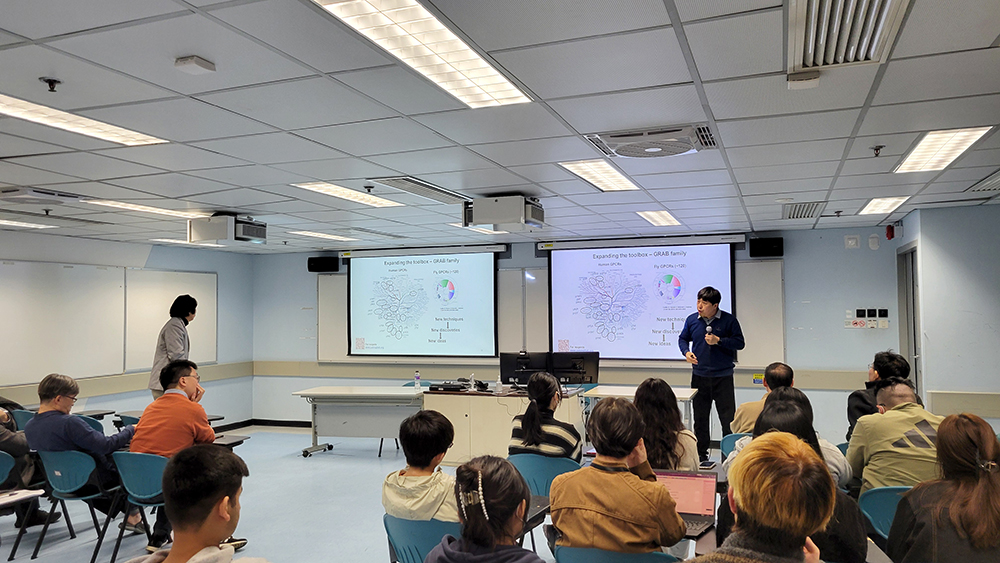

On 11th March, we were honored to invite Prof. Yulong Li of Peking University, to give a lecture entitled “Spying on neuromodulator dynamics in vivo by constructing multi-color genetically-encoded sensors”.
Dopamine is a crucial monoamine neurotransmitter in the nervous system, which regulates a variety of functions, including reward signaling, reinforcement learning, attention, and movement. However, there is currently no effective method to detect the dynamic changes of dopamine in behaving animals. He pioneered the introduction of cpEGFP into the third intracellular loop (ICL3) of the dopamine type II receptor, creating the first generation of genetically encoded green dopamine fluorescent sensors by comprehensively optimizing the linkers at both ends of cpEGFP. To further reduce their phototoxicity, background noise, and improve their tissue penetration, Li’s research group incorporated cpmApple into the dopamine type II receptor to produce the second-generation red dopamine fluorescent sensor. To improve the sensitivity and signal-to-noise ratio of the first two generations, Li’s team optimized the composition, length and key residues of the fluorescent proteins in the sensors, resulting in the third-generation green and red dopamine fluorescent sensors.

The brain contains a large number of neuropeptides, often referred to as neuromodulators. These peptides can regulate various physiological processes, including digestion, metabolism, sleep, circadian rhythm, reproduction, and advanced cognitive functions. To detect dynamic changes of neuropeptides in the brain, Li’s team systematically modified the ICL3 substitution position, linker sequence, receptors, and cpGFP key sites based on the previously developed norepinephrine sensor GRABNE1m. Furthermore, their group successfully created a series of sensors for somatostatin, corticotropin-releasing factor, cholecystokinin, neuropeptide Y, neurotensin, and vasoactive intestinal peptide. Among them, the somatostatin sensor can detect the endogenous release of somatostatin in mice during Pavlovian conditioning.
In addition, Prof. Li introduced how to use diverse sensors together, e.g. with a red dopamine sensor and a green cAMP sensor to simultaneously detect the dynamic changes of dopamine and cAMP in the mating behavior of mice. Genetically encoded neurotransmitter sensors have certain limitations in terms of excitation wavelength. Hence, Prof. Li moved forward to study far-red and near-infrared sensors that combine receptors, cphaloTag and rhodamine derivatives. Such sensors will perform better in tissue penetration, signal-to-noise ratio, and photostability. Fluorescence lifetime imaging may enable better quantification. Prof. Li has developed a new dopamine fluorescent sensor based on the principle of fluorescence lifetime imaging to measure neurotransmitter dynamics, providing a strong tool for precise quantification. To capture dynamic changes of neurotransmitters more stably, Li’s team inserted the norepinephrine sensor gene into the mouse rosa26 site, creating a transgenic mouse model for long-term and stable monitoring of the dynamic changes of norepinephrine.
The neurotransmitter sensors developed by Prof. Li’s team provide us with a powerful tool for studying neurological and psychiatric disorders.